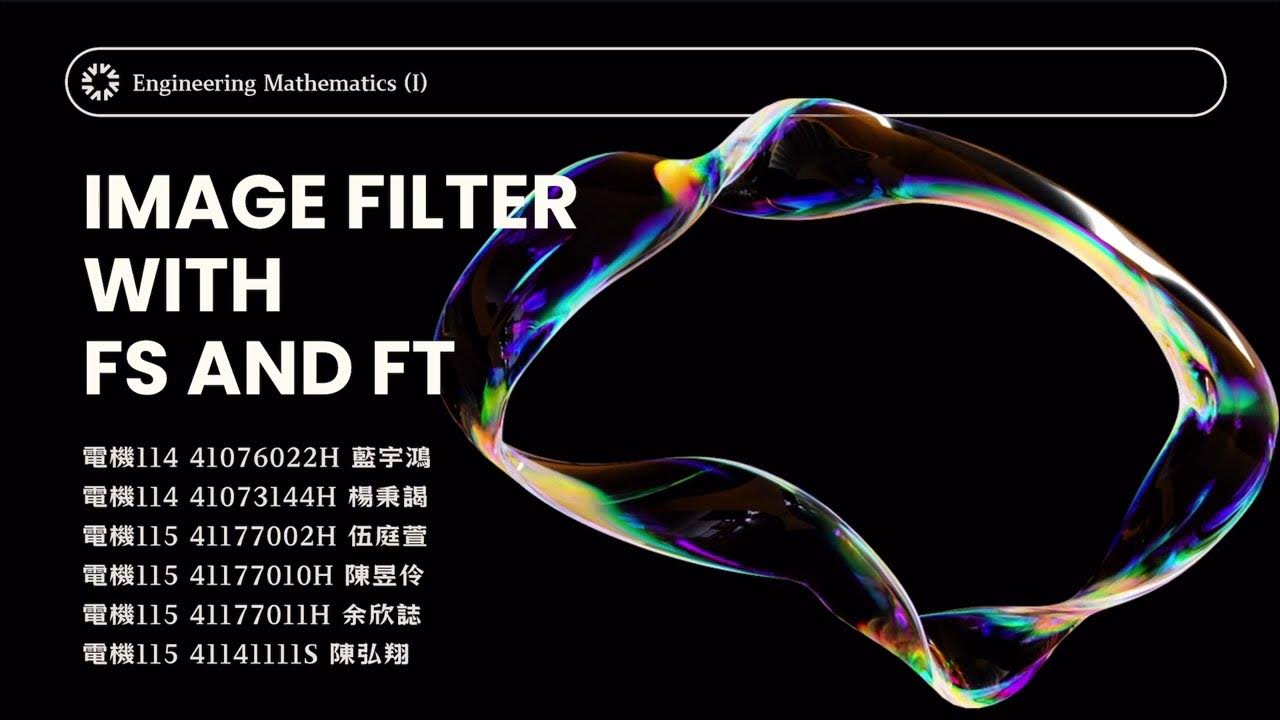LECTURE 13 - FOURIER TRANSFORMATION IN DIGITAL IMAGE PROCESSING | GATE GEOMATICS ENGINEERING | #gate
Summary
TLDRIn this engaging lecture on Discrete Fourier Transform (DFT), the speaker delves into its significance in image processing, highlighting how DFT converts frequency domain representations to spatial domain and vice versa. The lecture covers practical applications, including noise removal from images and the decomposition of images into sine and cosine components. Key concepts such as the representation of grayscale values, the relationship between frequency and image variation, and the mathematical formulation of DFT are explored. Ultimately, the session emphasizes the importance of DFT in understanding and transforming digital images.
Takeaways
- 😀 The Discrete Fourier Transform (DFT) is essential for analyzing and processing images by converting them from the spatial domain to the frequency domain.
- 📊 DFT helps in identifying the frequency components of images, which can be used to enhance or remove noise.
- 🖼️ The spatial domain consists of pixel values, while the frequency domain represents these values in terms of sine and cosine functions.
- 🔍 DFT decomposes an image into its constituent frequency components, allowing for detailed analysis and manipulation.
- 💡 The mathematical formulation of DFT for 2D images is crucial for understanding how it applies to image processing.
- ⚙️ Properties like rotation invariance indicate that the Fourier Transform will adapt when an image is rotated, preserving essential information.
- ✨ DFT can be used to enhance image brightness and contrast by manipulating frequency components.
- 📈 The lecture included practical examples of sinusoidal waves and their combinations to illustrate the transformation process.
- 🧮 The transformation is demonstrated step-by-step using a sample 4x4 grayscale image to show practical application.
- 🙏 Understanding DFT is vital for effective digital image processing, making it a crucial topic in engineering and applied mathematics.
Q & A
What is the main topic discussed in the video?
-The video discusses the Discrete Fourier Transform (DFT) and its applications in image processing.
Who introduced the Fourier Transform method?
-The Fourier Transform method was introduced by Joseph Fourier, who focused on how heat is distributed through different materials.
What does the Fourier Transform do?
-The Fourier Transform converts signals from the time domain to the frequency domain and vice versa, allowing for the analysis of frequency components within images.
What are the two main domains discussed in the video?
-The two main domains are the spatial domain and the frequency domain.
How does the Fourier Transform relate to image noise?
-The Fourier Transform can help remove noise from images, such as spots or vibrations, by decomposing the image into its sine and cosine components.
What is the formula for the Discrete Fourier Transform of an image?
-The formula for the DFT is given as a summation from 0 to N-1 for both rows and columns of the image, incorporating exponential functions to represent frequency components.
What is the significance of the sinusoidal waves in the Fourier Transform?
-Sinusoidal waves represent the frequency components of signals, allowing for the reconstruction and analysis of images based on their frequency content.
What happens when multiple sinusoidal waves are combined?
-When multiple sinusoidal waves are combined, they can create complex waveforms, and the Fourier Transform can help identify the unique frequency components that make up these combinations.
What is the role of the inverse Fourier Transform?
-The inverse Fourier Transform converts frequency domain data back into the spatial domain, allowing for the reconstruction of the original image.
Why is the Discrete Fourier Transform important in image processing?
-The Discrete Fourier Transform is crucial in image processing because it enables techniques for noise reduction, image compression, and feature extraction, significantly enhancing image quality and analysis.
Outlines

Dieser Bereich ist nur für Premium-Benutzer verfügbar. Bitte führen Sie ein Upgrade durch, um auf diesen Abschnitt zuzugreifen.
Upgrade durchführenMindmap

Dieser Bereich ist nur für Premium-Benutzer verfügbar. Bitte führen Sie ein Upgrade durch, um auf diesen Abschnitt zuzugreifen.
Upgrade durchführenKeywords

Dieser Bereich ist nur für Premium-Benutzer verfügbar. Bitte führen Sie ein Upgrade durch, um auf diesen Abschnitt zuzugreifen.
Upgrade durchführenHighlights

Dieser Bereich ist nur für Premium-Benutzer verfügbar. Bitte führen Sie ein Upgrade durch, um auf diesen Abschnitt zuzugreifen.
Upgrade durchführenTranscripts

Dieser Bereich ist nur für Premium-Benutzer verfügbar. Bitte führen Sie ein Upgrade durch, um auf diesen Abschnitt zuzugreifen.
Upgrade durchführen5.0 / 5 (0 votes)






